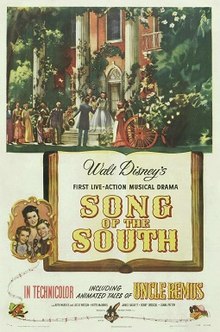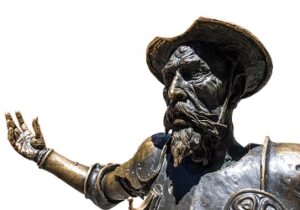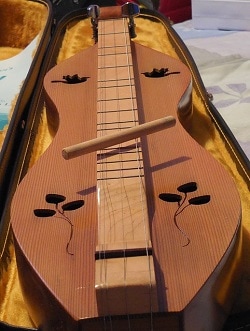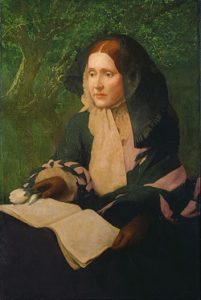 I assumed that the answer to the above question was “yes.” (And I have to admit here that I’ve never seen this movie or its live musical version. Our family has never been great fans of the Disney animated features, with the exception of Beauty and the Beast. But maybe now I’ll watch it, because I’ve gotten very intrigued by its creation.) So anyway, The Lion King has the distinction of being a Disney animated film based on an original story rather than a known source.
I assumed that the answer to the above question was “yes.” (And I have to admit here that I’ve never seen this movie or its live musical version. Our family has never been great fans of the Disney animated features, with the exception of Beauty and the Beast. But maybe now I’ll watch it, because I’ve gotten very intrigued by its creation.) So anyway, The Lion King has the distinction of being a Disney animated film based on an original story rather than a known source.
What’s the Historical Background of “Zip-A-Dee-Doo-Dah”?
 As I often say when writing these posts: Hoo boy. There ended up being lots to say about this supposedly simple song. My purpose in writing this post, as with all that I do, is to deepen your understanding of what you’re singing (or hearing, if you’re reading this post as an audience member). Along with the lighthearted words and fun arrangement of this piece there’s a darker background arising from its source material, both immediate and historical.
As I often say when writing these posts: Hoo boy. There ended up being lots to say about this supposedly simple song. My purpose in writing this post, as with all that I do, is to deepen your understanding of what you’re singing (or hearing, if you’re reading this post as an audience member). Along with the lighthearted words and fun arrangement of this piece there’s a darker background arising from its source material, both immediate and historical.
So let’s see—where to begin? I guess with the fact that “Zip” won the Oscar for Best Original Song in 1947; it had been performed in the 1946 Disney film Song of the South by James Haskett, a black actor who played the part of Uncle Remus. This movie is intriguing for a couple of reasons: 1) it mixes animation and live action, and 2) Disney has never released it in its entirety in the US on tape or digitally. I’m sure there are pirated versions out there, especially since the film was “re-released” several times. (You can watch the film in segments on YouTube.) And why has Disney kept this item in the vault? Here’s a good explanation:
What’s With All the Sets of Opposites in Lauridsen’s “Lux Aeterna”?
 There are so many ideas packed into the texts of Lux Aeterna that it’s hard to know what to include. But since the main juxtaposition is that of light vs. darkness, I thought it would be interesting for my second essay on this masterpiece to look at other pairs of opposites before I regretfully move on to other pieces in our concert. (Next week: the deep inner meanings of “Zip-A-Dee-Doo-Dah.”)
There are so many ideas packed into the texts of Lux Aeterna that it’s hard to know what to include. But since the main juxtaposition is that of light vs. darkness, I thought it would be interesting for my second essay on this masterpiece to look at other pairs of opposites before I regretfully move on to other pieces in our concert. (Next week: the deep inner meanings of “Zip-A-Dee-Doo-Dah.”)
How Many Sources of Light Are Mentioned in Lauridsen’s Lux Aeterna?
 Well . . . that depends. Probably the best answer is that there’s only one: God Himself. The first creative act of God recorded in the Bible, in the book of Genesis, concerns light: “And God said, Let there be light: and there was light” (Gen. 1:3 KJV). When we get to the last chapter of the last book of the Christian New Testament we see the same idea: “And there shall be no night there; and they need no candle, neither light of the sun; for the Lord God giveth them light” (Rev. 22:5 KJV). All through the piece there are references to light that have clear origins. I don’t want to give so many that I wear out your patience, so here are just three (using the translations printed in our sheet music):
Well . . . that depends. Probably the best answer is that there’s only one: God Himself. The first creative act of God recorded in the Bible, in the book of Genesis, concerns light: “And God said, Let there be light: and there was light” (Gen. 1:3 KJV). When we get to the last chapter of the last book of the Christian New Testament we see the same idea: “And there shall be no night there; and they need no candle, neither light of the sun; for the Lord God giveth them light” (Rev. 22:5 KJV). All through the piece there are references to light that have clear origins. I don’t want to give so many that I wear out your patience, so here are just three (using the translations printed in our sheet music):
“Oread Farewell” and Its Many Meanings
_(cropped).jpg)
One of the great privileges of performing classical music is that you get to delve into pieces written hundreds of years ago and others written within this century. If you’re fortunate you get to read or watch interviews with the composers and lyricists of modern music. Such is the case with the modern choral composer Dan Forrest, whose music my own choir has performed multiple times. We are also familiar with the work of poet/lyricist Anthony Silvestri, who provided the text. “Oread” was featured in our May 2018 concert as the closing piece, performed in the round.
So the first question is, “What’s an oread? And why is Forrest saying good-bye to whatever it is?” First things first. “Oread” is a term from Greek mythology meaning a mountain nymph. (Echo was one such, who was a consort of Zeus and was doomed by Hera, Zeus’s wife, to speak only the last words that had been spoken to her. Thus, when Echo fell in love with Narcissus, she couldn’t tell him how she felt and was forced to watch him falling in love with his own reflection in a pool.) So “oread” would be a suitable name for a mountain itself.
In which I follow the quest to find out the origin of “The Quest”
 I’m always interested in the origins of things: the why. So for the selection “The Impossible Dream” (titled “The Quest” in the actual script) from Man of La Mancha that I’ve sung with my own choir I wanted to know why on earth a popular Broadway show had been made from a 400-year-old, 700-page novel, Miguel de Cervantes’ Don Quixote. Doesn’t sound all that likely, does it? And yet it happened. (There are lots of other unlikely origins for Broadway musicals, though—Kiss Me, Kate is based on Shakespeare’s The Taming of the Shrew.)
I’m always interested in the origins of things: the why. So for the selection “The Impossible Dream” (titled “The Quest” in the actual script) from Man of La Mancha that I’ve sung with my own choir I wanted to know why on earth a popular Broadway show had been made from a 400-year-old, 700-page novel, Miguel de Cervantes’ Don Quixote. Doesn’t sound all that likely, does it? And yet it happened. (There are lots of other unlikely origins for Broadway musicals, though—Kiss Me, Kate is based on Shakespeare’s The Taming of the Shrew.)
What are Toto’s lyrics to their song “Africa” about, in toto?
Well, if  you thought you were going to get a clear explication about this song, you’re going to have to just accept the fact that we live in an imperfect world. The lyrics of Toto’s “Africa” have a number of explanations that have been given by members of the band, notably by David Paich, a band keyboardist and vocalist.
you thought you were going to get a clear explication about this song, you’re going to have to just accept the fact that we live in an imperfect world. The lyrics of Toto’s “Africa” have a number of explanations that have been given by members of the band, notably by David Paich, a band keyboardist and vocalist.
Thoughts on Gail Kubik (not a girl) and Polly-Wolly-Doodle (also not a girl).
 When my choir the Cherry Creek Chorale sang an arrangement of “Polly Wolly Doodle” by someone named Gail Kubik. I assumed that “Gail” indicated a woman. But Gail is a guy, and he lived in the 20th century, He wrote three operas, several violin concertos, and a number of film scores, including one for the Dr. Seuss animated film “Gerald McBoing Boing” for which he won an Oscar in 1951. But he didn’t rest on his laurels, no sir-ee. In 1952 he won the Pulitzer Prize in music for his “Sinfonia Concertante.” He kept busy throughout his life with teaching and commissions. “Polly” was commissioned by the Robert Shaw Chorale during the 1950’s. Kubik entered into the playful tone of the song, as you’ll be able to see if you watch the performance video at the bottom of this post.
When my choir the Cherry Creek Chorale sang an arrangement of “Polly Wolly Doodle” by someone named Gail Kubik. I assumed that “Gail” indicated a woman. But Gail is a guy, and he lived in the 20th century, He wrote three operas, several violin concertos, and a number of film scores, including one for the Dr. Seuss animated film “Gerald McBoing Boing” for which he won an Oscar in 1951. But he didn’t rest on his laurels, no sir-ee. In 1952 he won the Pulitzer Prize in music for his “Sinfonia Concertante.” He kept busy throughout his life with teaching and commissions. “Polly” was commissioned by the Robert Shaw Chorale during the 1950’s. Kubik entered into the playful tone of the song, as you’ll be able to see if you watch the performance video at the bottom of this post.
How Much Verbiage Can Possibly Be Lavished on the History and Meaning of “The Battle Hymn of the Republic”?
 Answer: a lot. Like, a whole lot. The following isn’t at all definitive, but it should give you a sense of the historical milieu from which the song came.
Answer: a lot. Like, a whole lot. The following isn’t at all definitive, but it should give you a sense of the historical milieu from which the song came.
I think all of us have a vague idea that “The Battle Hymn of the Republic” has something to do with the Civil War, and you may or may not be aware that its tune is the same as “John Brown’s Body.” a popular song among Union soldiers that they had adapted from an old Methodist revival song, “Say, Brothers, Will You Meet Us.” Wikipedia says this about the origin of the words, taken from an account by a soldier::

.png)